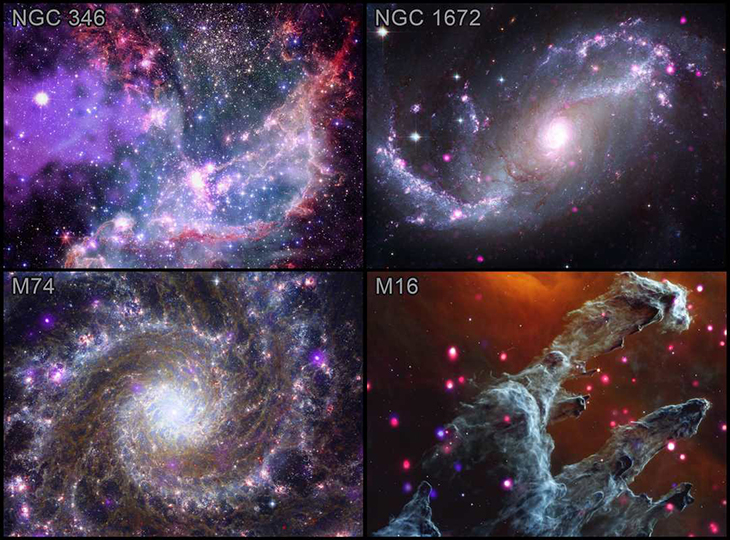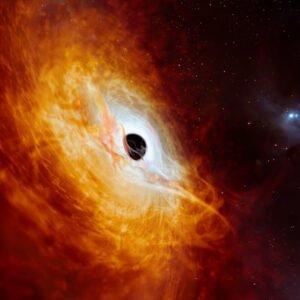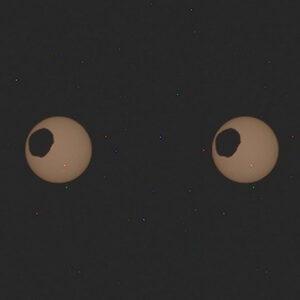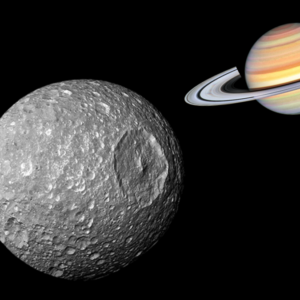
It’s no wonder that kids are amazed by astronomy. Just one look up into the night sky provides enough awe-inspiring sights to keep one enthralled for hours. And with all the advancements in technology, people have the ability to explore the universe in ways that they never thought possible.
There are five space-based observatories that are working together to create mesmerizing composite images of celestial phenomena. Using X-rays and infrared light, some of the universe’s most striking artworks – the hidden wonders of the cosmos which are invisible to the naked eye – are now revealed to the naked eye.
Here, we’ll take a look at the images that these incredibly state-of-the-art machines have managed to capture, giving us a chance to see the distant galaxies, star clusters and nebulae.
The first image in the top left corner is that of NGC 346, which is a star cluster in the Large Magellanic Cloud. This is a satellite galaxy of the Milky Way that’s positioned around 200,000 light years away from Earth. The mesmerizing purple and blue haze on the left side of the photograph represents X-rays, which is a high-energy light that was left behind by a supernova explosion. On the upper right side of the photo, the data from the James Webb, alongside the retired Spritzer telescopes, manage to show us a vivid picture of the magnificent plumes of dust and gas in the galaxy. These are actually what serve as the building blocks for new stars, while also leaving remnants from old stars that have long since illuminated the cosmos.
To the right is the NGC 1672, a stunning spiral galaxy known for its unique twist. While astronomers categorize it as a “barred” spiral because it has straight bars rather than the usually curved arms that tend to extend from the center of spiral galaxies. Alongside the X-rays are the infrared and optical light observations from the James Webb and Hubble space telescopes, respectively. Through this dynamic combination, we are able to have a comprehensive view of the galaxy, allowing us to better understand its complex structure and other universal mysteries.
It was the space-based Chandra X-ray Observatory – Earth’s flagship X-ray observatory that was developed by Harvard – that detected the X-rays.
As for Messier 74, it’s affectionately known as the “Phantom Galaxy.” This is because of its rather dim appearance which makes it harder to see with telescopes. But with this particular image, one can see its face-on orientation due to the position Earth was in when it was taken.
The James Webb’s infrared observations, which show vibrant greens, yellows, reds and magentas, outline the distribution of dust and gas within the galaxy, while the Chandra telescope’s data managed to spotlight the high-energy activity from its stars at X-ray wavelengths colored in purple. Meanwhile, Hubble’s optical data unveils additional stars and dust nestled amidst the cosmic dust lanes.
As for the last photo, the Messier 16, it has been commonly referred to as “Pillars of Creation” due to very obvious reasons, however, it is actually referred to as The Eagle Nebula. This stunning region of the sky is characterized by the presence of dark columns of gas and dust, concealing the birth of new stars within their depths.
It’s due to the James Webb telescope’s ability to capture the stars that we are able to see how they form within these pillars, signified by the dots in the image. The dots aren’t just any ordinary stars, but young, energetic ones that radiate copious amounts of X-rays. The Chandra X-ray Observatory’s data, which can be seen in red and blue, shows the major activity exhibited by these young stars.
What are your thoughts? Please comment below and share this news!
True Activist / Report a typo


